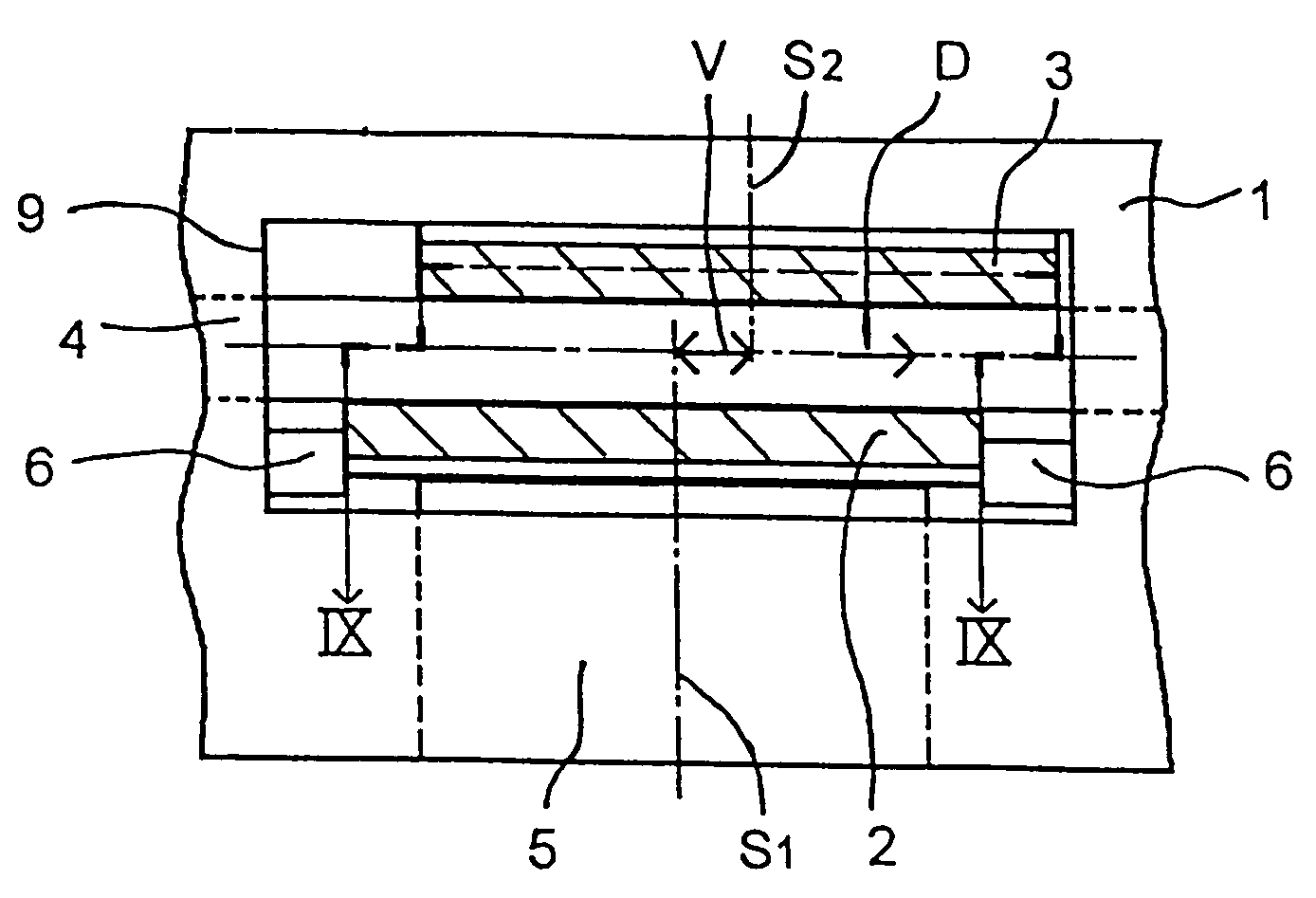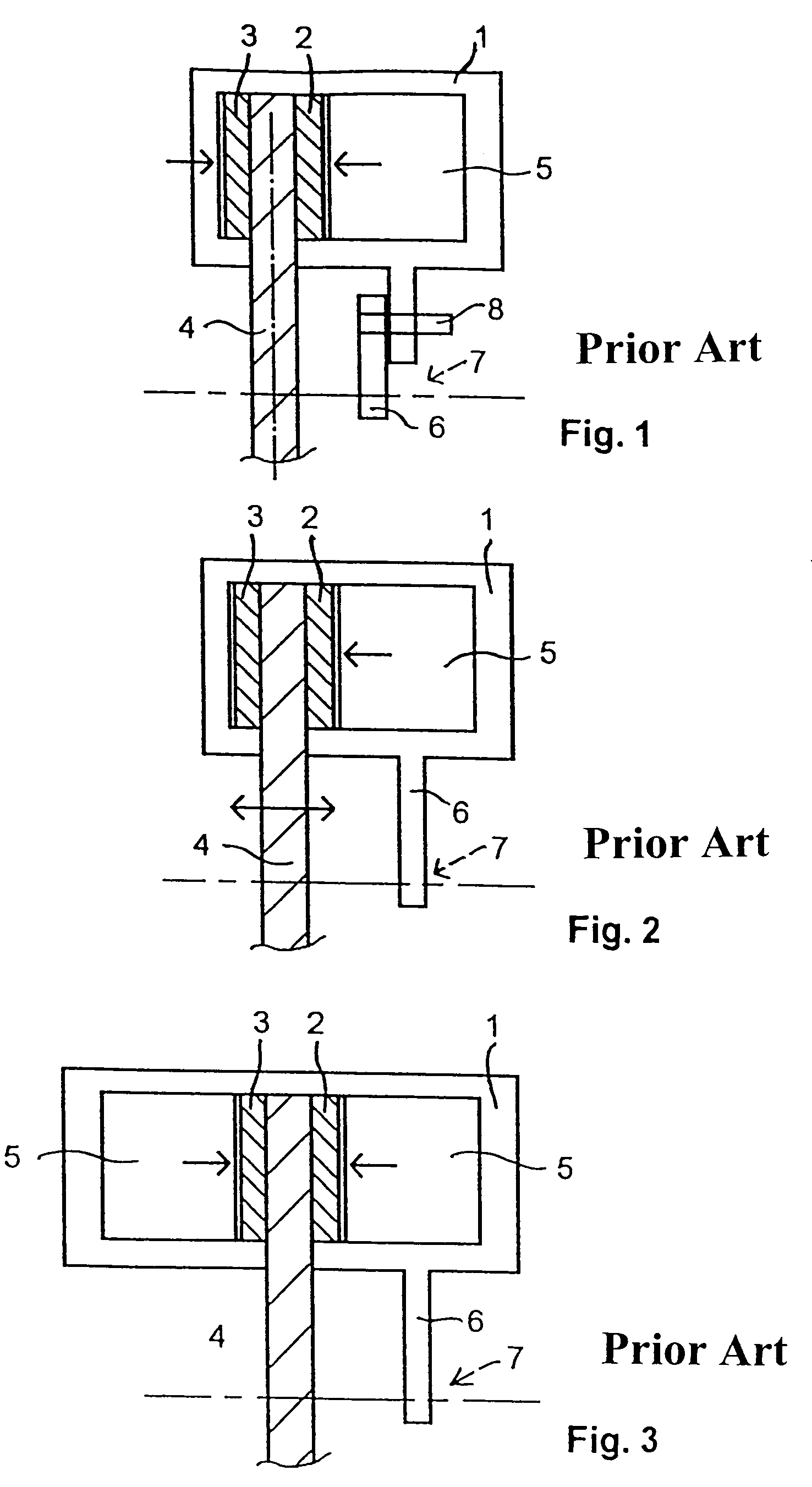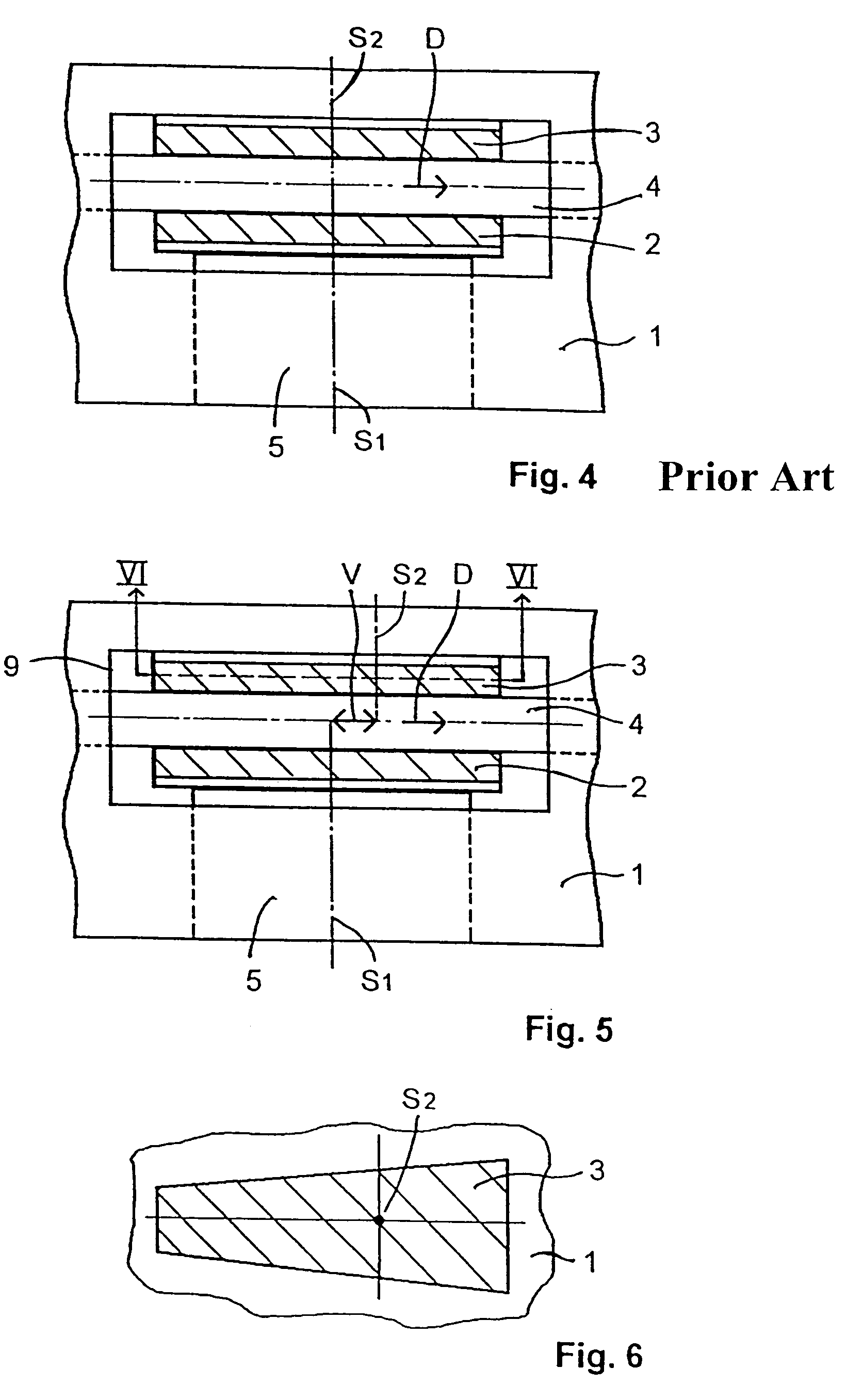Disk brake
a technology of disc brake and side brake, applied in the direction of brake types, actuators, brake elements, etc., can solve the problems of reducing the weight of the caliper, reducing the service life of the caliper, so as to achieve the effect of reducing the weigh
- Summary
- Abstract
- Description
- Claims
- Application Information
AI Technical Summary
Benefits of technology
Problems solved by technology
Method used
Image
Examples
Embodiment Construction
[0048]To the extent that they are present, the reference numbers used in FIGS. 5-9 are the same as those used in FIGS. 1-4.
[0049]As can be seen in FIGS. 5-9, the centers of gravity S1 and S2 do not coincide as they do in the state of the art. The corresponding offset is realized according to FIGS. 5 and 6 in that the contour of the facing of the brake pad 3 is designed so that its center of gravity S2 is offset from the center of gravity S1 of the brake pad 2 by a distance V toward the trailing side of the brake disk.
[0050]The offset V toward the trailing side of the brake disk, however, is preferably achieved by shifting the brake pad 3 in a parallel direction and / or by rotating it around an angle b in the free sidepiece of the caliper (FIGS. 7 and 9) with respect to the brake pad 2. The two centers of gravity S1 and S2 thus lie in any case on an imaginary arc of a circle around the center of the brake disk 4. This design offers the advantage that linings of the same design can be ...
PUM
 Login to View More
Login to View More Abstract
Description
Claims
Application Information
 Login to View More
Login to View More - R&D
- Intellectual Property
- Life Sciences
- Materials
- Tech Scout
- Unparalleled Data Quality
- Higher Quality Content
- 60% Fewer Hallucinations
Browse by: Latest US Patents, China's latest patents, Technical Efficacy Thesaurus, Application Domain, Technology Topic, Popular Technical Reports.
© 2025 PatSnap. All rights reserved.Legal|Privacy policy|Modern Slavery Act Transparency Statement|Sitemap|About US| Contact US: help@patsnap.com



